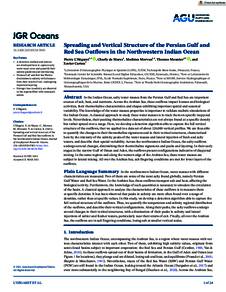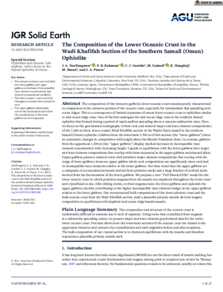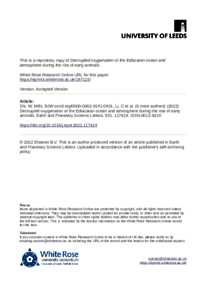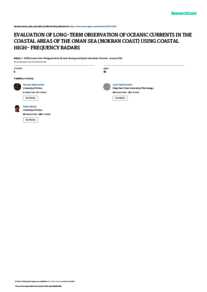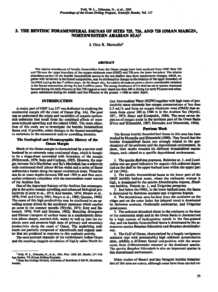Document
A Seasonal dipolar eddy near Ras Al-Hamra (Sea of Oman).
Identifier
DOI: 10.1007/s10236-013-0616-2
Contributors
Lacour, Leo., Author
Carton, Xavier., Author
Roullet, Guillaume., Author
Baraille, Remy., Author
Correard, Stephanie., Author
Publisher
Springer.
Gregorian
2013-05
Language
English
Subject
English abstract
Trajectories and hydrological data from two Argo floats indicate that warm and salty water at 200-300-m depths was ejected from the coast of Oman, near Ras al Hamra, in spring 2008, 2011, and 2012. This warm and salty water, Persian Gulf Water (PGW), once ejected from the coast, recirculated cyclonically in the western Sea of Oman, but also flowed eastward along the Iranian and Pakistani coasts. There, it was expelled seaward by mesoscale eddies as shown by other float data. Seasonal maps of salinity were computed from all available Argo floats; they showed that, in spring, PGW is present in the middle and north of the Sea of Oman, contrary to fall, when the salinity maxima lie southeast of Ras al Hadd. The ejection of PGW from Ras al Hamra is related here to the influence of a mesoscale dipolar eddy which often appears near this cape in spring. The time-averaged and empirical orthogonal functions of altimetric maps over 11 years for this season confirm the frequent presence and the persistence of this feature. From surface currents and hydrology, deep currents were computed via thermal wind balance, and the associated shear and strain fields were obtained. This deformation field is intense near Ras al Hamra, with an offshore direction. This flow structure associated with the mesoscale dipole explains PGW ejection from the coast. This observation suggests that PGW distribution in the Northern Arabian Sea can be strongly influenced by seasonal mesoscale eddies.
Member of
ISSN
1616-7341
Resource URL
Category
Journal articles


